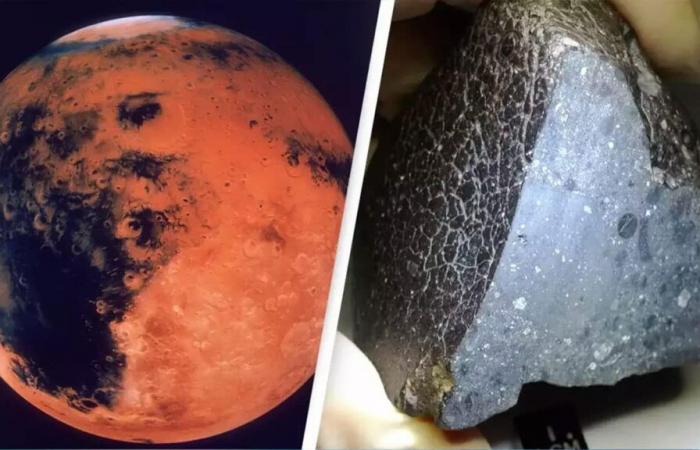The discovery of a 4.5 billion year old asteroid has sparked great interest in the scientific community. This find could well revolutionize our understanding of life on Mars. Researchers have found what appears to be the oldest direct evidence of possible life on the Red Planet.
A revolutionary discovery in the asteroid “Black Beauty”
The asteroid called “Black Beauty”, which fell to Earth in 2011, conceals exciting secrets. This polished black rock, approximately 2 billion years old, is believed to be the second oldest Martian meteorite ever discovered. On the other hand, scientists from Curtin University have made an even more astonishing discovery inside this asteroid.
A 4.45 billion year old zircon grain has been identified in the structure of “Black Beauty”. This tiny fragment contains evidence of the presence of warm water on Mars at a very ancient time. This discovery could revolutionize our understanding of hydrothermal systems linked to magmatic activity on early Mars.
Aaron Cavosie, from Curtin’s School of Earth and Planetary Sciences, said: “We used nanoscale geochemistry to detect basic evidence of warm water on Mars 4 years ago. .45 billion years. »
Water, a key element of Martian habitability
The presence of liquid water is considered a essential ingredient for the development of life. This discovery suggests that Mars had this crucial element from the earliest stages of its crust formation. Scientists had already established that Mars was home to liquid water around 4.2 billion years ago, thanks to the discovery of evidence of rivers and ancient lake beds.
However, this new study considerably pushes back the chronology of the presence of water on Mars. Analysis of the zircon grain revealed the presence of elements such as iron, sodium, aluminum and yttrium, added during its formation 4.45 billion years ago. These findings suggest that water was present during Mars’ early magmatic activity.
Here is a summary table of the elements discovered in the zircon grain:
| Element | Signification |
|---|---|
| Fer | Geological activity indicator |
| Sodium | Associated with the presence of water |
| Aluminium | Component of igneous rocks |
| Yttrium | Hydrothermal process marker |
Implications for the search for extraterrestrial life
This discovery opens new perspectives in the quest for extraterrestrial life. Hydrothermal systems played a crucial role in the appearance of life on Earth. The presence of such systems on Mars at such an early time suggests that the Red Planet could have provided conditions favorable to the emergence of life.
The implications of this discovery are multiple:
- Reassessment of the Martian habitability timeline
- New avenues for the search for ancient biomarkers
- Potential reorientation of future exploration missions
- Better understanding of planetary evolution
This scientific advance could also have repercussions on our understanding of the evolution of planets in general. Just as wind power is revolutionizing our approach to Earth’s resources, these discoveries on Mars could transform our vision of planetary habitability.
Future prospects for Martian exploration
The results of this study pave the way for exciting new research. Future rovers and space missions could be directed toward searching for additional evidence of this ancient hydrothermal activity. The possibility of finding traces of fossilized microbial life in these ancient geological formations can no longer be excluded.
This discovery also reinforces the importance of preserve Martian samples for future analyses. Nanoscale analysis techniques, like those used in this study, could reveal even more secrets about the geological and potentially biological history of Mars.
By pushing the boundaries of our understanding of Martian history, this research may bring us closer to answering the legendary question posed by David Bowie: “Is there life on Mars?” » Although the definitive answer remains to be discovered, each new scientific advance brings us a little closer to the truth about our mysterious red neighbor.






